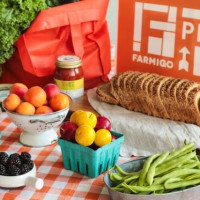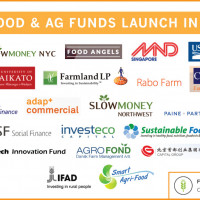For several months our team at Good Eggs has been researching the local food phenomenon around the country. We’re looking for ways in which technology can help grow and sustain local food systems worldwide, accelerating the changes that are already having major positive impact in the world. Our premise, which is the shared premise of Food+Tech Connect and likely its readers, is that technology is going to play a meaningful role in that growth over the coming years.
Here’s an observation we’ve made in the course of our research that the food+tech community may find interesting: in cases where local food systems are thriving, food and groceries are treated as services instead of goods. Said another way, many successful local food systems are services economies, not goods economies. Instead of simply buying vegetables, bread, and meat as discreet goods from the supermarket – which is the predominant way our food system works today – folks are forming ongoing relationships with vegetable farmers, bakers, and ranchers.
CSAs are the most extreme and explicit example of this new kind of economic structure, where customers make a long-term commitment to a farmer. But the phenomenon appears to be much broader and not necessarily as explicit: farmers, ranchers, bakers, butchers, picklers, and certainly grocers all over the country are becoming food service providers to their customers, above and beyond being manufacturers or retailers. As service providers these food businesses sustain real relationships with their customers, treat them as regulars with a variety of perks, and turn to them for meaningful input.
We think this is significant for three main reasons: first, it gives local food producers an inherent advantage over national brands. Food producers today usually compete on the basis of price, merchandising and convenience. In that kind of paradigm, those with the largest economies of scale will win. Contrast that to a services economy in which customers value strength of relationship with their service providers, the level of accountability, and customer service. Structurally that kind of scheme favors the local businesses who are active participants in the community. The way for national brands to compete in a services economy is to actively decentralize their management, procurement, and customer service, which is a change we’d love to see.
Second, the shift to a services economy presents an opportunity to change the real cost of food without sticker shock. Local food, produced with integrity, just costs more to produce, period. The costs will come down somewhat as more consumer dollars shift to local food providers and governmental policies are reformed, but they’ll never be fully competitive with prices of industrial food. So we need to present local food for sale in some way other than (local) apples to (industrial) apples. Paying an apple orchard to be your apple orchard – for all your apples, not just the occasional treat – is one way to do that.
Third, and perhaps most interesting to the readers of Food+Tech Connect, technology can clearly add value in this shift to a services economy. In fact, better technology is necessary if we’re going to accelerate this structural change in the way our food systems work. Technology, and software in particular, can be extremely effective for keeping track of and communicating with customers (CRM), community building, social networking, event planning, and other kinds of tools that enhance customer-business relationships.
What examples have you all seen of food businesses becoming service providers? What are ways that we can all accelerate this trend? We’d love to hear what you think.
[Sign up for Food+Tech Connect Bytes to have stories like this one come directly to your inbox.]






